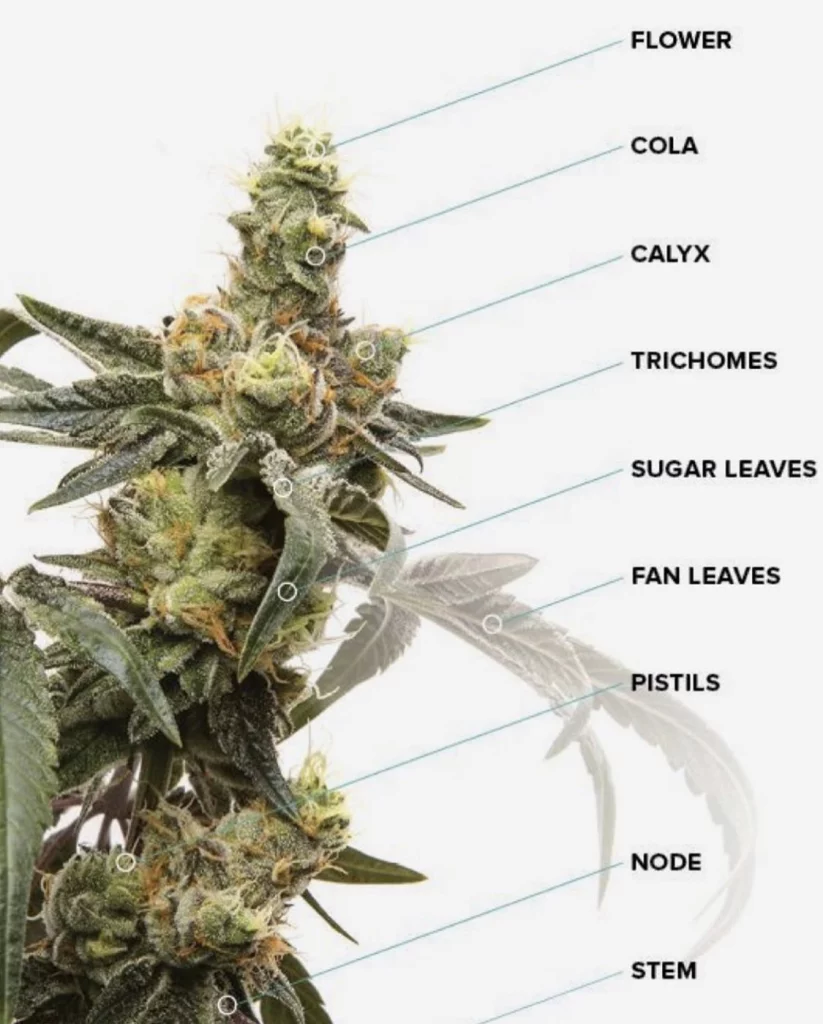English
For fans of solvent-free cannabis extracts, most would agree that a properly cleaned full melt hash is about as good smoke as it gets. Screening of this quality looks like fine white sand, but on closer inspection, small foamy orbs seem almost suspended in tiny cloud-like formations. Under the microscope, thousands of tiny trichome heads appear perfectly separated from their padded stems, picked like fresh berries from a basket. A tiny pinch can be as aromatic as cologne and can hitting your nose with a barrage of aromas.
Trichome production : From cultivation to harvest and beyond
Trichome culture is more of a philosophy than a practice. At its core, the concept can be broken down into two guiding principles: trichome proliferation and trichome preservation. Together they form a mantra for producing the highest quality cannabis in the world. At every stage of cannabis cultivation, harvesting, curing and extraction, trichome preservation and proliferation remain the two guiding forces for maximising the resin’s potential.
Maximizing trichomes on cannabis flowers starts with genetics
Getting flowers with trichomes is a journey that starts with choosing the right genetics. Some cannabis genotypes produce a higher concentration of trichomes than others. Selecting and acquiring genetics with high desirable yields is the only way to build a solid foundation for sufficient trichome production.
The most suitable varieties in our seed range are :
Grow Habitat and Trichome Production
After genetics, the most important element to consider for maximising resin production is the growing habitat. Although a certain genotype may be predisposed to high trichome production, if it does not benefit from the right growing conditions, its potency may be insufficient.
The amount of trichomes does not necessarily equate to the production of cannabinoids and terpenes in the trichome head. These factors are largely influenced by environmental factors that occur during the flowering cycle of a plant. Among the plethora of environmental factors that come into play when growing cannabis, variables such as light spectrum, nutrient uptake, watering cycles, temperature, humidity and air circulation will all have a significant impact on resin formation and cannabinoid production.
Avoid contact with the trichomes of the cannabis flower
Another very important consideration when growing trichomes is to minimise contact with the cannabis flowers. Trichomes are very sensitive and burst on contact. Any physical interaction with the cannabis flowers during the flowering phase may compromise the integrity of the trichomes. If you have to handle flowers, it is very important to be as careful as possible. When harvesting, the same concept applies – any unnecessary manipulation will mostly result in trichome loss.
Trichome production and temperature
Besides physical interaction, heat is another major enemy of resin formation. During cultivation, keeping temperatures as low as possible promotes production. It is widely accepted that at the end of a cannabis plant’s flowering cycle, maintaining low temperatures triggers increased resin production. During harvesting, it is also important to maintain a constant cool temperature. Much progress can be lost if high levels of heat enter the equation at any stage of the growing, harvesting and drying process.
An easy way to tell if heat is affecting your crop is to sniff it. Disturbed trichome heads and those exposed to heat will give off pungent aromas. This delicious smell is nothing more than the breakdown of the trichomes by heat and/or agitation. However, beware of too low a temperature during harvesting. At temperatures close to zero and below, the trichomes separate easily from the marijuana.
Harvesting trichomes at the right time
There are a multitude of folk guides circulating on the internet to maximise resin production. From light deprivation to plant mutilation (cutting or pricking your plants to stress them), these tips and tricks vary in their effectiveness. The most important thing to consider when exposing your plant to unusual conditions is to constantly check that it is in good health.
In the later stages of a plant’s flowering cycle, a crucial factor in preserving trichomes is to harvest them at the right time. With the help of an inexpensive magnifying glass, you can identify the colour of the glandular dome of a trichome to determine the ideal time to harvest it. When the trichomes are light and translucent, they are not yet ready and still produce valuable cannabinoids. When they start to lose their opacity and turn milky white, it indicates that your plants are almost ready to be harvested.
For maximum resin production and potency, it is essential to harvest the trichomes when they have turned from a milky white to an amber hue. Like the fruit, trichomes are at the peak of their flavour just before they turn. The change in colour to a predominantly amber hue is a strong indicator that the trichomes have reached the peak of their development cycle.
At each stage of the growing process there are opportunities to make decisions in favour of resin production. For those seeking powerful, trichome-stacked flowers, it is essential to adopt some of these techniques for growing trichomes.
The preservation and proliferation of trichomes depends on the respect given to them during the growing and harvesting process. Adopting the philosophy of trichome preservation is essential to maximise resin production, potency and preservation. For hashish manufacturers, trichome cultivation is the only way to achieve superior quality. Without these practices, products such as hash or wax could not exist.
Related articles :
Published by Sakul
26/03/2023choose and buy cannabis seeds from our offer
our pleasure





























